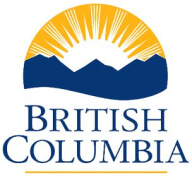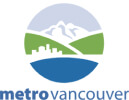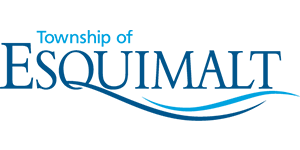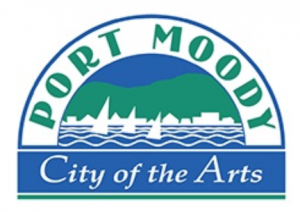PWT President, David O’Sullivan, has dedicated his time to the authorship of several important published papers on the science of trenchless technology. Enjoy an introductory read of featured abstracts below. For a deeper dive, full papers can be requested via the links provided.
Discover how trenchless technology is transforming infrastructure management in Canada. This eBook explores innovative solutions to reduce carbon emissions, minimize disruption, and extend the life of aging underground assets.
Learn how municipalities are tackling infrastructure challenges with cost-effective, sustainable methods, supported by real-world case studies and expert insights. Download now to see why trenchless is the smarter choice for building resilient, future-ready communities!
GET THE EBOOKNorth American Society for Trenchless Technology (NASTT) NASTT’s 2018 No-Dig Show, Palm Springs, California, March 25-29, 2018 Paper Number MM-T4-01
Velimir Stetin, P.Eng. – City of Maple Ridge, British Columbia, Canada
David O’Sullivan – PW Trenchless Construction Inc., Surrey, British Columbia, Canada
This paper describes a successful application of Static Pipe Bursting technology that was used in 2017 to replace an undersized gravity sanitary sewer in the City of Maple Ridge, British Columbia, Canada. A major upsize was required (from 15 inches to 34 inches). Seven critical sections (a total of 2,456 feet) of 15 inches diameter PVC sanitary sewer were operating at capacity. With many developments occurring upstream of those sections, the City of Maple Ridge had an immediate need to upsize those sections. The sanitary sewer runs through an environmental sensitive area (the shore of Kanaka Creek, Metro Vancouver’s Kanaka Creek Park, and a green belt) and the area has high water table. Open cut replacement was not feasible, therefore pipe bursting technology was chosen.
In 2014 a smaller up-size (15 inches to 20 inches) was completed successfully a block away and that gave the City of Maple Ridge the confidence to further explore the potential for larger pipe up-size. The replacement was split into 7 sections/pulls averaging 350 feet each. The existing manholes had to be replaced with larger manholes and, as typical, the entry/exit pits were excavated at the manhole locations, to facilitate removal of existing manholes and construction of larger manholes at completion of pipe bursting.
The equipment used was Groundoburst 2500G Static Pipe Bursting Rig (287 tons of pull force at 250 bars, maximum pull 315 tons). Maintaining the grade of the pipe was critical and with such a major upsize ground heaving was a concern. The flow was maintained during construction through a temporary 8 inch bypass line.
The project was completed successfully with no disturbance to existing utilities.
If you would like to read more, requests for full paper can be made by contacting the North American Society for Trenchless Technology (NASTT) , at https://www.nastt.org
North American Society for Trenchless Technology (NASTT)
NASTT’s 2014 No-Dig Show, Orlando, Florida, April 13-17, 2014
Paper MM-T6-04
Jim Young, P.Eng. City of Richmond, Richmond, BC, Canada
Michael Schwanke, EIT, City of Richmond, Richmond, BC, Canada
David O’Sullivan P W Trenchless Construction inc. BC, Canada
Artificial ground freezing has been around since the late 1800’s. Providing an alternative to typical shoring and water management technologies, ground freezing is a viable alternative as a method of excavation stabilization in areas with high ground water.
Since its invention, ground freezing technology has been used primarily in mining applications such as tunnel and shaft support. However with the enforcement of pollution legislation relating to dissolved minerals it is no longer possible to discharge ground water into a storm sewer. The alternatives are to discharge into the sanitary system if the capacity exists or to provide onsite treatment. The onsite treatment systems are expensive to install and maintain, and the resulting discharge is not always in compliance.
In the case of the Van Horne Way sanitary sewer upgrade project in Richmond, BC, Canada, we chose to use ground freezing and this represents one of first times this technology has been employed in Canada for a utility replacement project. The factors that led to the selection of ground freezing included the soil conditions at the site, a high ground water table, poor ground water quality, the depth of the main, the potential impacts of dewatering, and the proximity to existing infrastructure including two warehouse buildings and active railway tracks.
If you would like to read more, requests for full paper can be made by contacting the North American Society for Trenchless Technology (NASTT) , at https://www.nastt.org
North American Society for Trenchless Technology (NASTT)
No-Dig Show 2012 Nashville, TN, March 11-15, 2012
Paper C-6-04
David O’Sullivan, PW Trenchless Construction Inc., British Columbia, Canada
ABSTRACT: The continued need for the replacement of underground utility networks will challenge North America’s water and sewage utility providers financially in more ways than just the lack of money. The challenge that this paper refers to is an enforced carbon market, something currently cloaked in doubt, uncertainty and weak political support internationally. However, in British Columbia, 175 local districts, responsible for utility provision, have committed themselves to be carbon neutral by 2012. This means that at the end the accounting year of 2012, these local governments will be responsible for purchasing carbon credits to offset the pollution they created directly in their supply of their day to day operations. This paper addresses the concern of a future carbon accounting economy, and promotes a trenchless industry that is offering a less carbon intensive alternative that reaches the same outcomes of open cut trenching. NASTT-BC has developed a carbon footprint calculator to effectively and accurately predict and measure carbon created and avoided by the selection of different utility installation methods.
NASTT-BC has also developed a Carbon Protocol which will allow local districts to monetize the carbon reductions that they are currently generating when they use trenchless construction and use the carbon reductions against their day to day operations. This will assist these local districts in achieving carbon neutrality.
If you would like to read more, requests for full paper can be made by contacting the North American Society for Trenchless Technology (NASTT) , at https://www.nastt.org
February 24, 2012
David O’Sullivan, President, PWT Trenchless Construction Inc.
David Describes the measures taken in British Columbia to develop a carbon neutral protocol.
For years, the trenchless industry has been arguing that various trenchless construction methods help society in general by reducing traffic impact, public disruption and road surface patching. The question has always been how do we financially quantify these trenchless benefits and use the cost benefits to further the case for trenchless?
The British Columbia chapter of the North American Society for Trenchless Technology (NASTT) has developed a trenchless protocol to allow anybody using trenchless techniques – as opposed to traditional open-cut – to create a carbon credit.
But there have been other attempts to be more sustainable: in 2007, the province of British Columbia (BC) brought in legislation to lower its carbon emissions, thereby joining California, which previously had brought in similar legislation in 2006.
Many other provinces of Canada, as well as 39 US states, have various forms of legislation in place to lower carbon emissions. The trenchless industry in BC sought to try to work this to its advantage and promote the use of all types of trenchless.
For a copy of the full paper, request can be made to PWT Trenchless
North American Society for Trenchless Technology (NASTT)
No-Dig Show, Chicago, Illinois, May 2-7, 2010
Paper E-3-02
David O’Sullivan, PW Trenchless Construction Inc. and NASTT-BC
ABSTRACT: We in the first and second world have a major job in front of us in the next 30 to 50 years, replacing all the existing utilities we depend upon for clean water and sewage disposal. To install these utilities we have the option of using trenchless methods of construction which have a much lower carbon footprint than conventional open cut. As a responsible industry in the new world of sustainability and carbon neutrality we have a large role to play.
The area of Metro Vancouver is like other West Coast metropolitan areas; it was founded and built in the mid to late 1800’s and had major development surges from the 1900 to the late 20’s and from 1950 on to the 70’s and 80’s. The existing sewer systems, because of reasons I will explain later, will all need to be replaced in the next 20 to 30 years. Trenchless technologies can complete this replacement at a lower cost than conventional open cut construction and at the same time emitting a much lower carbon footprint. This is achieved because of a large reduction in trench excavation to facilitate the utility rebuilding and a corresponding lowering of traffic congestion.
We want to show you how to measure the resulting carbon footprint of installing utilities by various methods, should they be conventional open cut methods or trenchless, and the resulting impact on the public.
If you would like to read more, requests for full paper can be made by contacting the North American Society for Trenchless Technology (NASTT) , at https://www.nastt.org
An alternate tendering process where the contract is awarded to one entity which comprises both engineering and contracting.
Because PW Trenchless Construction offers such innovative solutions for underground utilities, it is often beneficial for the owner to request solutions based on a performance specification. This allows PW Trenchess to offer unique solutions while working with equally innovative engineering companies. Learn more about design - build here!
More InfoNew installation methodologies include HDD & traditional open cut Learn more about new installation here!
More InfoIn this day & age of pipe systems reaching the end of their projected lifespan, pipe replacement and pipe rehabilitation have become major fields of engineering.
PW Trenchless Construction provides viable options such as pipe bursting, loose fit lining and internal pipe re-construction whether partial & fully circumferential. Learn more about pipe replacement & rehabilitation here!
More InfoThe aging culverts under roads and highways in many case have reached the end of their engineered life-span. We consider the rehabilitation or replacement of these culverts to be vital to our built environment.
PW Trenchless has been a pioneer in working with MOTH, railway companies and municipalities in developing rehabilitation methodologies for the hundreds of thousands of culverts that currently exist in BC. We have offered solutions in both procurement and construction from design-build to sliplining, invert rehabilitation and full circumferential relining. Learn more about culvert rehabilitation here!
More InfoOften pipe failure can be concentrated to one section, for various reason, leaving the rest of the pipe in good condition. The repair of these localized failures are know as external point repairs (EPR's).
EPR's demonstrate PW's ability to work as both a trenchless and civil contractor, completing EPR contracts using our civil contracting skills and assisting other pure trenchless contractors who only have the capacity to work in an existing pipe. Learn more about point repairs here!
More InfoPipe upsizing is the fundamental concept of pipe bursting.
The vast majority of pipes are less than or equal to 200mm in diameter, but with today's densification practices of urban design, there is a major demand to increase current capacity to handle extra flow. Pipe bursting provides the ideal solution to this issue, particularly in an urban setting. Learn more about pipe upsizing here!
More InfoHorizontal Directional Drilling is a low impact Trenchless construction service where pipe is installed in a shallow arc along a bore path which has been created by a drilling rig. Often the terms Horizontal Directional Drilling (HDD) and Directional Boring are used interchangeably, but in our industry we use the word “boring” when we utilize smaller sized drilling rigs with small diameters for short crossings in the hundreds of feet, and we use the word “drilling” when we utilize larger rigs with large diameters for long crossings in the thousands of feet. Learn more about horizontal directional drilling here!
More InfoPrimus Line® is a flexible sliplining solution for the trenchless rehabilitation of pressure pipes. The system consists of a flexible Kevlar® reinforced liner and specially developed end fittings. Primus Line® is not bonded to the host pipe and is self-supporting. An annulus remains between Primus Line® and the host pipe.
Developed by experienced engineers, the system is suitable for different media as well as various application needs and has already proven itself in numerous projects.Learn more about primus lining here!
More Info





























When you join PWT, you become part of a community of people who are engaged in the most innovative practices in the Trenchless Industry. We have been instrumental in setting up a scientific method for cities to gain carbon offsets/credits from their use of trenchless construction. This system has been reviewed by the BC Government and has been approved as of December 2018. We expect to see it in common use shortly.
Subscribe to our newsletter for cutting-edge industry updates, expert knowledge, and exclusive content.